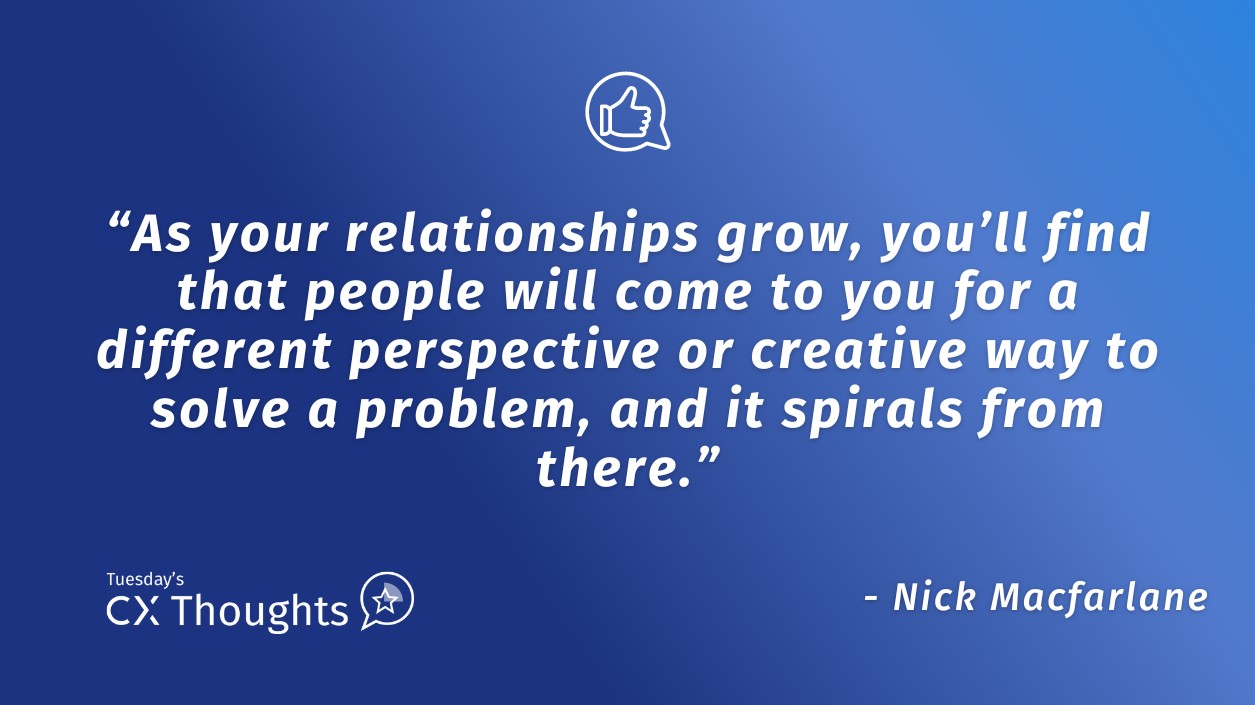
With all the talk of proving ROI and delivering value, constant conversations around what is the correct metric, and wrangling between departments about “who owns the Customer Experience”, It’s clear that often navigating the internal stuff as a CX professional is just as hard as understanding what your customers think.
So, I wanted to try and lay out a few ideas and techniques that, in my experience, will help you as you navigate the CX journey within your organisation. And let’s face it: If CX is like “self-help for an organization,” it’s easy to see why this stuff is hard, as we often don’t like to look inwardly and take the steps we know we need to take to do things for ourselves!
My first tip is understanding your role and how you can help others clearly. The best analogy I’ve heard here is that as a CX leader, you are like the conductor of an orchestra. You may not play a single instrument, but you are the one who makes it hang together and gives the audience what they expect! Another way of putting it is that you are the person who builds the widest horizontal view of the organization and joins the dots for others.
This brings me to Tip number two, which is to grab every opportunity to talk to others, understand their motivation, metrics, and challenges, and offer to help. As your relationships grow, you’ll find that people will come to you for a different perspective or creative way to solve a problem, and it spirals from there. This is because people in different parts of the organization are often hyper-focused on what’s important to them and can’t see how the CX team can help until they have! Take the quick wins on yourself and build momentum.
Tip number three is linked to this, and is all about learning to speak the language of who you are talking to. If we come across all “NPS, CSAT, framework, and sentiment,” it will likely go over their heads and be labeled as “CX Fluff” in the same way as when someone in the finance team starts talking about EBITDA, margins, or amortization to us CX folk. If you are like me, you quickly glaze over and think I better look that up later but never do! Find common ground, talk about what they want to hear, and translate what you are doing into things that will work for them. This is where your previous relationship building will help you tune in and prepare.
Another related point here, and tip number four, is to be forward-looking. By its nature a lot of what we do in CX is looking at historical events and data and painting a picture. But the danger there is it just becomes “interesting” to the people who are making decisions daily based on predictions and forecasts of what is going to happen – and we all know that to be branded simply “interesting” is the enemy of CX! It’s that old human thought process we all have from time to time to time raising its head: “Oh, that’s interesting – immediately forget it.” So, as a CX pro, why not try to take what you’ve learned from analyzing all your customer data and try and play it forward. The best example I’ve seen of this is a Waterfall chart (yes the type of thing the finance guys use) looking at all the projects with a customer impact coming up with a value of what you think the impact they’ll have is on whatever your headline metric is. It suddenly becomes a conversation about are these things worth doing rather than just another story about what customers like and dislike which adds something to what you are bringing to the table.
My fifth and final tip is don’t underestimate the power of Customer Journey Mapping, yes its great to help explain what it is your customers actually experience when interacting with your brand but it does so much more to help facilitate the types of conversations mentioned above. You can bring people together, and help them to understand the role they play in the customer experience which sometimes isn’t obvious and then promote conversations between teams that when silo’d create those sticky moments for our customers. It’s a great tool and is as much about having the difficult conversations internally as the end product.
So, there’s lots to take in. The internal landscape of CX in any organisation is going to be a challenge, and you’ll need to have great listening skills, be open to feedback, be passionate, open, and honest, with a good dose of curiosity and resilience. But it’s worth it!
To summarise, if you are working in CX – Start listening to your customers and internal stakeholders, Create facts from the data you are getting, Take those facts out to people who need to hear them, and start building momentum!
Is there something wrong with your customer experience?
When you complete an honest assessment, the outcome can be beneficial, particularly for your Customer Experience program.
Take five minutes and complete an audit for your organization here.
You may discover a gap in measurement, an opportunity to improve a process, the place where an organizational shift needs to take place or an opportunity to win a greater share of your customers’ wallets.
We all want that bigger “return.” In this situation, the worst-case scenario is that you’ll get some information that will help your organization since completing this audit is free and without obligation.







